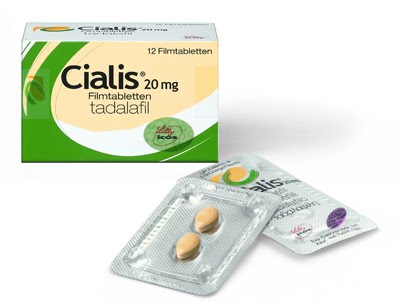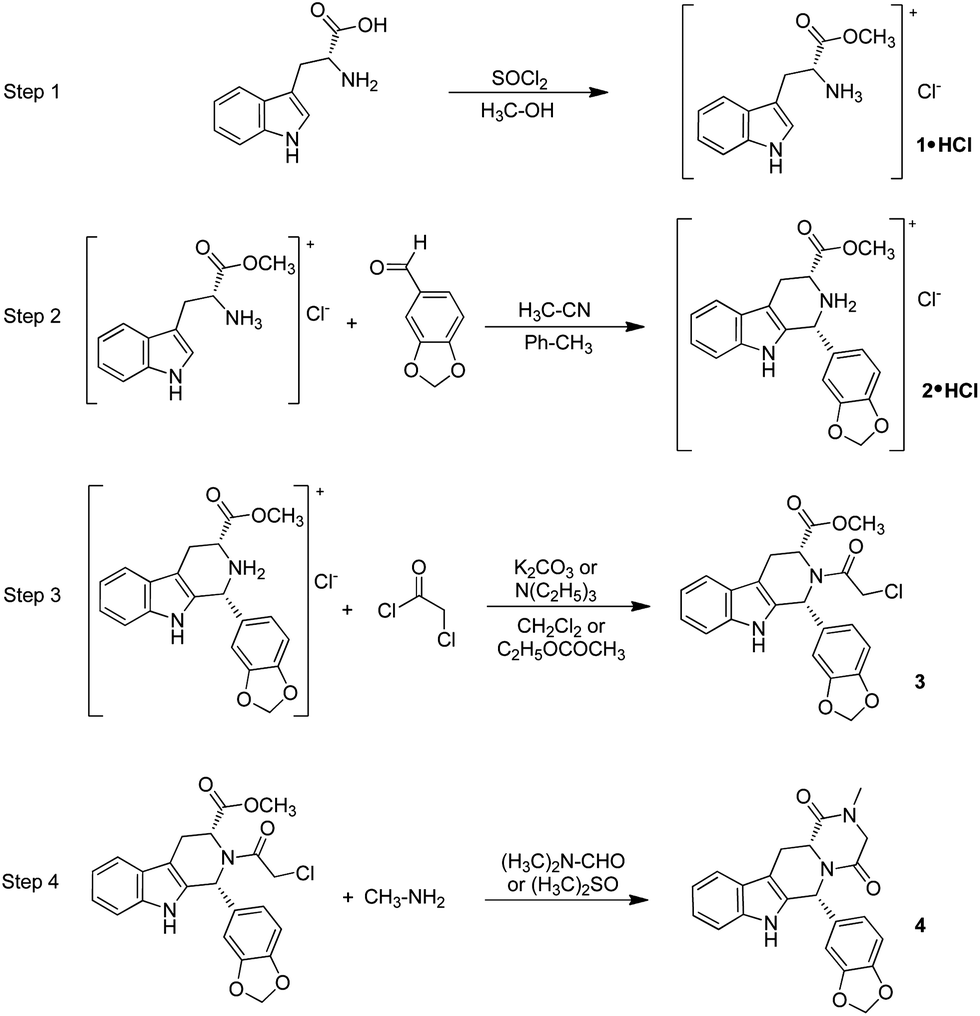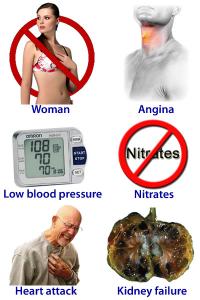Authors: Carine Nankia - Ivan Gueukam
Introduction
Tadalafil is a selective PDE-5 inhibitor and it is indicated for the treatment of erectile dysfunction.Additionally, tadalafil is 700-fold more potent for PDE-5 than for PDE-6 receptors, which is present In the retina, which would explain the higher case reports of visual adverse events associated with sildenafil. Tadalafil has the longest duration of action (~36 hours) among the current PDE-5 inhibitors,which allows a greater window for sexual activity. It is the only PDE-5 inhibitor whose activity is unaffected by meals. Tadalafil is predominantly metabolized by CYP3A to a catechol metabolite.
The presence of impurities in an active pharmaceutical ingredient (API) can have a significant impact on quality and safety of the drug product. As per the guide lines recommended by ICH, the acceptable level for a known and unknown related compound is less than 0.15 and 0.10 respectively. In order to meet the stringent regulatory requirements, the impurities present in the drug substance must be identified, characterized and eliminated. These impurities are required in pure form to understand the complete impurity profile and to check the analytical performance characterization


There are many routes reported for the synthesis of tadalafil 1, by employing Pictet-Spengler reaction and till now there are no reports in the literature describing the complete impurity profile of tadalafil. We have chosen two synthetic schemes for the process development, wherein one route reported by us and the other one reported by Daugan group. These two synthetic routes critically evaluated by means of quality, yield and to achieve an optimum process. As a part of this process, complete impurity profile in both the schemes has been studied. The present article describes the identification, synthesis and characterization of tadalafil impurities, metabolite and root cause of their formation.
p=. 

Gilla et al. Synthesis and characterization of related substances and
metabolite of tadalafil, a PDE-5 inhibitor, Organic Communications, 2013.
Mechanism of action

p=. 
Although sildenafil (Viagra), vardenafil (Levitra), and tadalafil (Cialis) all work by inhibiting PDE5, tadalafil's pharmacologic distinction is its longer half-life (17.50 hours) compared to sildenafil and vardenafil (both 4.0–5.0 hours) resulting in longer duration of action, and so partly responsible for "The Weekend Pill" sobriquet. Furthermore, the longer half-life is the basis for current investigation of tadalafil's daily therapeutic use in relieving pulmonary arterial hypertension. Sildenafil is approved in several world regions as a thrice-daily therapy for pulmonary arterial hypertension.
Penile erection during sexual stimulation is caused by increased penile blood flow resulting from the relaxation of penile arteries and the smooth muscle of the corpus cavernosum. This response is mediated by the release of nitric oxide (NO) from nerve terminals and endothelial cells, which stimulates the synthesis of Cyclic guanosine monophosphate (more commonly known as Cyclic GMP or cGMP) in smooth muscle cells. cGMP relaxes smooth muscle and increases blood flow to the corpus cavernosum.

The inhibition of phosphodiesterase type 5 (PDE5) enhances erectile function by increasing the amount of cGMP. Tadalafil (and sildenafil and vardenafil) inhibits PDE5. However, because sexual stimulation is required to initiate the local penile release of nitric oxide, tadalafil's inhibition of PDE5 will have no effect without direct sexual stimulation of the penis. The recommended tadalafil starting dose for most men is 10 mg, taken as needed before sexual activity (but not more than once daily). The dose may be increased to 20 mg or decreased to 5 mg, per its efficacy and the man's personal tolerance of the drug.In June 2007, the European Commission approved low-dose (2.5 mg and 5 mg) Cialis to be used as single-daily ED therapy.
Although available since 2003 in 5, 10, 20 mg dosage, in late 2008/early 2009, the U.S. FDA approved the commercial sale of Cialis in 2.5 mg dosage as a one-a-day treatment for ED. The 2.5 mg dose avoids earlier dispensing restrictions on higher dosages. The price of the 5 mg and 2.5 mg are often similar, so some people score and split the pill. Both physicians and the manufacturer warn against splitting the pill, especially since it is enterically coated and splitting might impact absorption.
Moreover, tadalafil (Adcirca) 40 mg was approved in 2009 in the United States and Europe (and 2010 in Canada and Japan) as a once-daily therapy to improve exercise ability in patients with pulmonary arterial hypertension. In patients with pulmonary arterial hypertension, the pulmonary vascular lumen is decreased as a result of vasoconstriction and vascular remodeling, resulting in increased pulmonary artery pressure and pulmonary vascular resistance. Tadalafil is believed to increase pulmonary artery vasodilation, and inhibit vascular remodeling, thus lowering pulmonary arterial pressure and pulmonary vascular resistance. Right heart failure is the principal consequence of pulmonary arterial hypertension.
On October 6, 2011, the U.S. FDA approved tadalafil to treat the signs and symptoms of benign prostatic hyperplasia (BPH). BPH is a condition in males in which the prostate gland becomes enlarged, obstructing the free flow of urine. Symptoms may include sudden urges to urinate (urgency), difficulty in starting urination (hesitancy), a weak urine stream, and more frequent urination - especially at night. The FDA has also approved tadalafil for treatment of both BPH and erectile dysfunction (ED) where the two conditions co-exist.
Katzung - Farmacologia generale e clinica, Piccin 2011.
Phosphodiesterase type 5 localization in the human outflow region (bladder, prostate, urethra).

Urinary bladder
Based on the hypothesis that the NO/cGMP signal pathway may play a role in the mechanism of micturition, the modulation of intracellular pathways mediated by the production of cGMP has been suggested to offer a promising possibility to achieve selective modulation of smooth musculature of the human urinary bladder. Using chromatographic methods, Truss et al. in 1996 were the first to report the presence of PDE5 in the human detrusor . Immunolabeling for PDE5 was seen in smooth muscle fibers and also localized in the endothelium and the smooth muscle layer of the vesicular-deferential arteries (originating from the inferior vesical artery, the main source of blood supply to the bladder), maintaining continuous blood perfusion of the detrusor wall . Given the ubiquitous expression of PDE5 in the vascular system, its presence in the bladder vascular system was expected. In contrast, the expression of PDE5 in the urothelium was only sparse . At the messenger RNA level, the expression of PDE5 was also verified by reverse transcriptase polymerase chain reaction (RT-PCR) analysis . The expression of mRNA encoding for PDE5 was higher in the detrusor and penile erectile tissue (corpus cavernosum) than in the prostate and . However, despite these findings, a pivotal role for NO and cGMP-mediated signals in the control of detrusor smooth muscle has yet to be established. Cyclic adenosine monophosphate (cAMP) regulated by PDE type 4 isoenzymes may play an even larger role in bladder smooth muscle cell relaxation.
Giuliano et al. The mechanism of action of phosphodiesterase type 5 inhibitors in the treatment of lower urinary tract symptoms related to benign prostatic hyperplasia, Eur Urol 2012
Prostate
There is evidence from numerous experimental studies that the NO/cGMP system and related key proteins, including the cGMP-degrading PDE5, are pivotal players in the control of the normal function of the prostate. This may include the contractile activity of the smooth musculature, secretory glandular function, as well as the regulation of proliferation of smooth muscle, glandular epithelial cells, and stromal connective tissue . Kuciel and Ostrowski in 1970 were the first to isolate the activity of phosphodiesterase enzymes from human prostate tissue . Using ion exchange chromatography to separate proteins and an assay based on tritium-labeled cGMP, PDE5 was detected in cytosolic supernatants from minced human prostate tissue excised from the transition zone . The expression of mRNA encoding for PDE5 in the prostate was later confirmed by quantitative RT-PCR . However, these research approaches did not provide sufficient information on the localization of PDE5 in the prostate.
The distribution of PDE5 in different histologic portions of the prostate was revealed by immunohistochemistry: Utilization of specific antibodies demonstrated the localization of this cGMP PDE isoenzyme in glandular areas, the smooth musculature of the prostatic stroma, and also in blood vessels transversing the tissue sections , prominent localization of PDE5 was detected in vascular (endothelial and smooth muscle) cells of human prostate. It was also shown that, in the transition zone of the prostate, PDE5 is localized in close conjunction to other key mediators of the NO/cGMP pathway. For example, in the smooth musculature, the PDE isoenzyme was found colocalized with its main substrate cGMP. The PDE5/cGMP-positive smooth muscle bundles were seen transversed by slender varicose nerve fibers immunoreactive for the neuronal isoform of NOS (nNOS). The smooth muscle fibers also presented abundant staining for the cGMP-binding, cGMP-dependent protein kinase cGKI (here cGKIß). Interestingly, abundant labeling specific for the cyclic AMP-binding protein kinase A was also registered in bundles of PDE5-immunoreactive smooth musculature. These bundles were innervated by nerve fibers containing significant amounts of vasoactive intestinal polypeptide (VIP), a neuropeptide known to promote the local production of the second messenger molecule, cAMP .
Giuliano et al. The mechanism of action of phosphodiesterase type 5 inhibitors in the treatment of lower urinary tract symptoms related to benign prostatic hyperplasia, Eur Urol 2012
Urethra
It is well established that the urethra is pivotal in maintaining urinary continence and enabling coordinated micturition in both genders. Up to the present, only a very few studies have addressed the mechanisms controlling the function of human urethral smooth musculature. While the contraction of urethral smooth muscle mediated by the activation of α-adrenoreceptors has been attributed to the continence mechanism, the relaxation of the longitudinal and/or circular smooth muscle layer during micturition has been assumed to be mediated by the NO/cGMP pathway.
The functional significance of the PDE5 and other key proteins of the cGMP signaling in this process has not been clarified comprehensively. Immunohistochemistry performed on sections of human female urethra demonstrated the expression of the cGMP-specific PDE5 in vascular and nonvascular smooth muscle cells and in the vascular endothelium. In the nonvascular smooth muscle, PDE5 was found colocalized with the cGMP-binding protein kinase cGKI, whereas in vascular endothelial cells, co-staining for PDE5 and cGMP was seen . More recently, the predominant expression of mRNA transcripts specifically encoding for PDE5A (cGMP-PDE) was shown by means of RT-PCR analysis . Another molecular biology approach that specifically investigated the expression of the cGMP PDE5 in human LUT tissue found a consistent expression of the enzyme in the prostatic urethra. Here, the abundance of expression was higher than in the prostate gland . These findings were paralleled by immunohistochemical investigations to describe the localization of PDE isoenzymes in the human male distal (penile) urethra.
In the tissue sections, PDE5-immunoreactive smooth muscle bundles were seen innervated by varicose nerve fibers characterized by the expression of nNOS; some of these nerves also presented staining specific for the VIP and calcitonin gene-related peptide . Although the striated musculature seems to play a role in urethral function, no study has yet addressed the expression of PDE5 in human tissue. Using rat tissue, the expression and distribution of PDE5 was shown in striated muscle of the urethra, where it was predominantly seen colocalized to the Z-band striations. The amount of PDE5 in the striated component was six times that observed in the smooth musculature, suggesting that PDE5 is possibly significant in the regulation of striated muscles . However, it remains to be clarified whether these findings can be replicated in humans and what the functional implications are.
Giuliano et al. The mechanism of action of phosphodiesterase type 5 inhibitors in the treatment of lower urinary tract symptoms related to benign prostatic hyperplasia, Eur Urol 2012
Side effects

Tadalafil has been used in approximately 15,000 men participating in clinical trials, and over eight million men worldwide (primarily in the post-approval/post-marketing setting). The most common side effects when using tadalafil are headache, stomach discomfort or pain, indigestion, burping, acid reflux, back pain, muscle aches, flushing, and stuffy or runny nose. These side effects reflect the ability of PDE5 inhibition to cause vasodilation (cause blood vessels to widen), and usually go away after a few hours. Back pain and muscle aches can occur 12 to 24 hours after taking the drug, and the symptom usually disappears after 48 hours
Side effects - FDA Announces Revisions to Labels for Cialis, Levitra and Viagra, 2007
Drug interactions

Since PDE5 inhibitors such as tadalafil may cause transiently low blood pressure (hypotension), organic nitrates (poppers) should not be taken for at least 48 hours after taking the last dose of tadalafil. Using organic nitrites (such as the sex drugamyl nitrite) within this timeframe may increase the risk of life-threatening hypotension.
Since people who have taken tadalafil within the past 48 hours cannot take organic nitrates to relieve angina (such asglyceryl trinitrate spray), these patients should seek immediate medical attention if they experience anginal chest pain. In the event of a medical emergency, paramedics and medical personnel should be notified of any recent doses of tadalafil.
Tadalafil is metabolized predominantly by the hepatic CYP3A4 enzyme system. The presence of other drugs which induce this system can shorten tadalafil half-life and reduce serum levels, and hence efficacy, of the drug.
Drug interactions - Rxlist.com
Conclusions
PDE5 isoenzymes are highly expressed in human LUT tissues. PDE5 inhibition results in smooth muscle relaxation and increased pelvic blood perfusion in these tissues and likely modulates afferent nerve activity. This activity may affect nonvascular or vascular smooth muscle tone. We propose that the improvement in both storage and voiding urinary symptoms observed after 1–2 wk of tadalafil could be caused by the smooth muscle cell relaxation in bladder neck, prostate, and urethra, with the maintenance of effect possibly supported by the smooth muscle cell relaxation of these organs’ vascular supply and increased blood perfusion and oxygenation. Modulation of the sensory output from the LUT is likely to play a role in both the short and long term